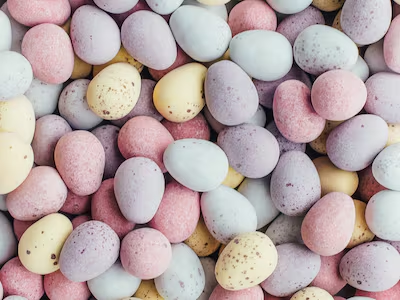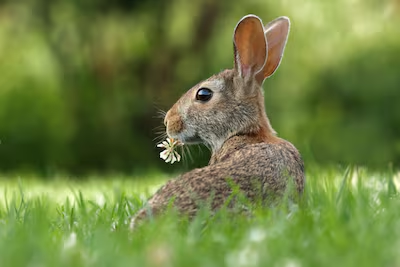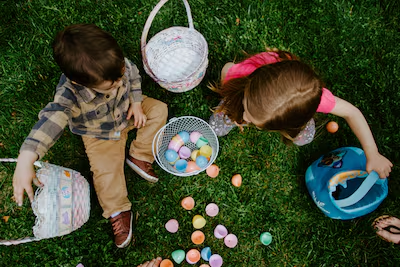Easter is right around the corner and Christians around the world are preparing to celebrate the long weekend.
While countries and churches have unique ways of commemorating the festival, for many, the celebrations extend beyond Easter Sunday and stretch to Pentecost Sunday. It's a time for family, remembrance and gift-giving, as well as feasting.
Christians who gave things up for Lent, 40 days before Easter, can indulge once more on the night of Maundy Thursday, which this year falls on April 17.
If you've wondered what the days of holy week – the days leading up to Easter Day – represent, why eggs are traditionally given during this time and what kinds of celebrations take place across the world, here's what to know.
When is Easter Sunday this year?
Easter Sunday falls on April 20 this year. As a moveable feast, the date changes each year, but always falls on a Sunday between March 22 and April 25.
The week of festivities, or holy week, begins with Palm Sunday, which this year fell on April 13. The most significant days that follow are Maundy Thursday, Good Friday, Holy Saturday and Easter Sunday. In some countries, Easter Monday is also observed.
Maundy Thursday commemorates the Washing of the Feet and The Last Supper, the crucifixion of Jesus is marked on Good Friday. Holy Saturday, also known as Joyous Saturday, is when preparations for Easter Sunday are made.
When is Easter 2026?
Next year, Ash Wednesday falls on February 18, Good Friday on April 3 and Easter Sunday on April 5.
Why does Easter change dates every year?

Unlike other Christian holidays, Easter changes dates annually. Named a moveable feast, the celebration dates change year on year – and there are several reasons why. Firstly, Easter Sunday must always take place after the spring equinox, also known as the first day of spring. This year, that fell on April 20, a few weeks later than in 2024, which was also a leap year.
This decision dates back to 325 when the Council of Nicaea (Council of Nice) – the first united Christian council – declared that Easter Sunday must occur after "the 14th day of the paschal moon; that the moon was to be accounted the paschal moon whose 14th day followed the spring equinox".
Much like Ramadan and Eid, Easter takes its lead from the lunar calendar, as the Gregorian calendar wasn't widespread until the 16th century. Therefore, Easter takes place after the first full moon appears either during or after the spring equinox.
Easter dates are also sometimes tied to the Jewish festival of Passover, as some theologists and scholars believe this is when the Last Supper – Jesus's final meal with his disciples – was originally held. This year, Passover began on April 12.
What is Easter Sunday?
Easter Sunday marks the day Christians believe Jesus Christ was resurrected from the dead.
The Bible says that after Jesus was crucified on Good Friday, his body was taken down from the cross and placed in a cave. A stone was put over the entrance, so that no one could steal the body, with Roman guards posted outside.
On the third day after the crucifixion, according to gospels, Jesus was resurrected and appeared to Mary Magdalene, one of his disciples.
Is Easter a public holiday?
In Christian countries, Easter is observed as a public holiday, with schools and places of work closed on Friday and Monday, creating a long weekend.
In some countries, such as Denmark, Norway and Iceland, Maundy Thursday is also a public holiday, while in others, such as the US, Easter Monday isn’t considered a holiday.
In the UAE, while it isn't a public holiday, many celebrations take place, from Easter egg hunts to themed brunches.
Why do people give Easter eggs?

Eggs have long been associated with Easter as a symbol of fertility and rebirth in Christianity.
Years ago, people would paint or dye chicken eggs to give to each other as gifts, with red a preferred colour to symbolise the blood of Christ.
These days, in western Christianity, people give one another chocolate eggs that are traditionally empty inside to represent Jesus’s empty tomb.
Why are hot cross buns eaten during Easter?
Hot cross buns are traditionally eaten on Good Friday, and have been for hundreds of years.
As well as the cross on the bun being representative of Jesus's crucifixion, the spices to flavour the sweet buns are said to represent that spices used to embalm his body, too.
Is the Easter Bunny a religious story?

Rabbits are a symbol of spring and have become inextricably linked to Easter.
The Easter Bunny does not appear in the Bible, but rather was derived from the story of the Easter Hare in German folklore, which was Lutheran in origin.
In a fable similar to Santa Claus, the Easter Hare would judge whether children had been good or naughty that year, with the good children rewarded with coloured eggs, sweets and toys.
It is thought the custom was first mentioned in Georg Franck von Franckenau's 1682 book De ovis paschalibus (About Easter eggs).
How do Christians traditionally celebrate Easter?
As well as having heavy religious symbolism, Easter is also a time for family, and many choose to gather for meals and celebrations. After giving up a certain food for Lent, Christians may indulge in what they had abstained from, with chocolate a popular choice.
Additional special church services are held during Holy Week, with the ringing of church bells.
Traditionally, different seasonal foods are associated with Easter, such as lamb, spring vegetables, hot cross buns and Easter bread, the ingredients of which vary from country to country. Hot cross buns are traditionally eaten on Good Friday and represent the crucifixion.
Easter egg hunts can be hosted in public or at home, and Easter baskets weaved and decorated.
Since medieval times in western Christianity, simnel cakes have been baked. The marzipan-filled fruit cakes are traditionally associated with Mother’s Day and are eaten during the Easter season.
How is Easter celebrated around the world?

While parades are popular worldwide, including those that involve wearing homemade Easter bonnets, there are many different traditions globally. In Bermuda, people head to clifftops to fly kites on Good Friday. In Finland on Holy Saturday, girls dress up as Easter witches and go door-to-door driving away evil spirits with a bunch of willow twigs. They are then given a chocolate egg in thanks.
Harking back to Napoleonic times, on Easter Monday in the French town of Haux, a giant omelette is served in the main square. Made up of 15,000 eggs it feeds up to 1,000.
In Florence, locals have been celebrating the same tradition for the past 350 years. Scoppio del Carro, or "explosion of the cart", has an ornate cart packed with fireworks pushed through the city streets by people wearing 15th-century costumes. Stopping outside the Duomo, the Archbishop of Florence lights the fuse during Easter mass that leads outside to the cart and sparks a lively firework display.
